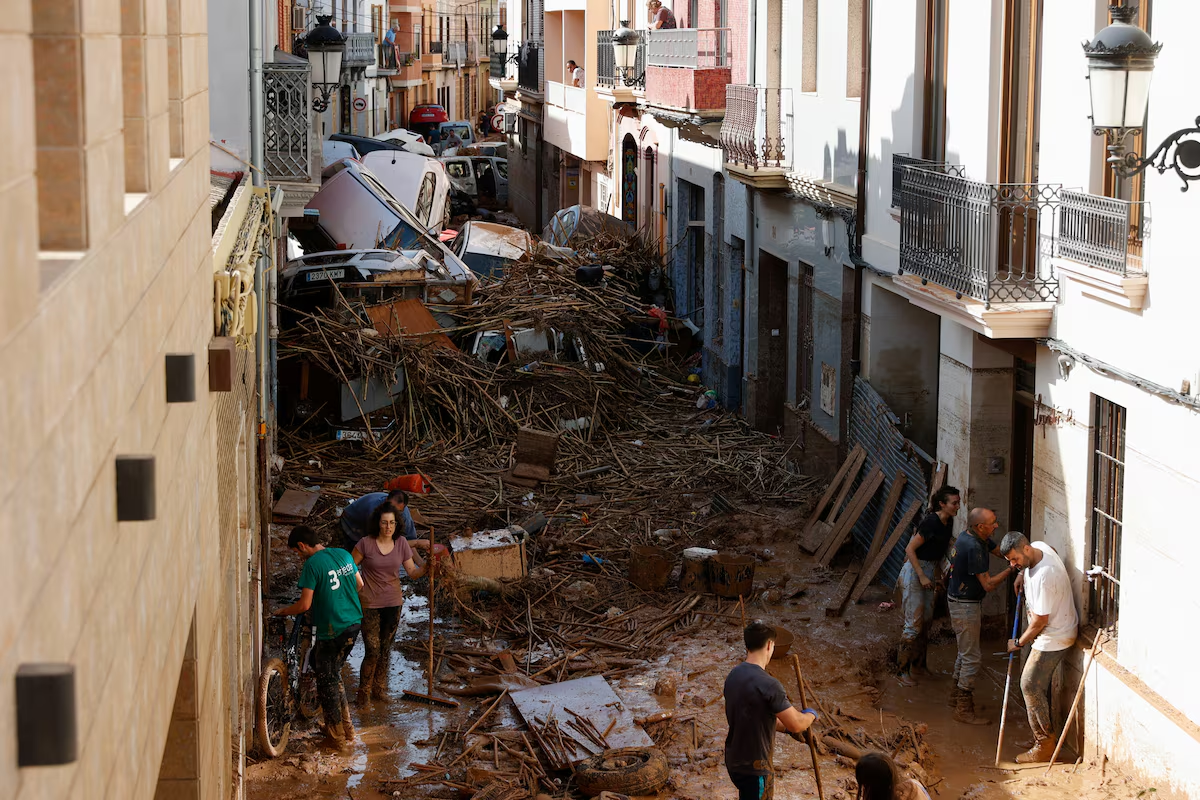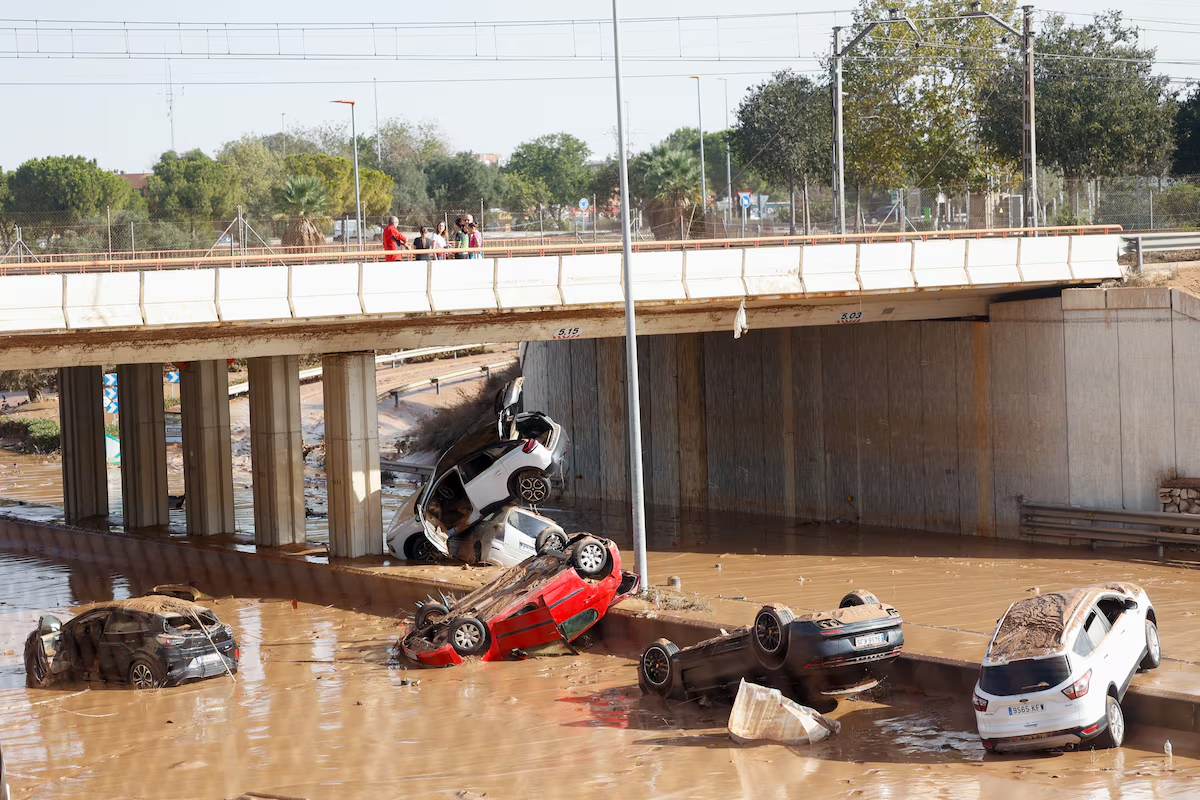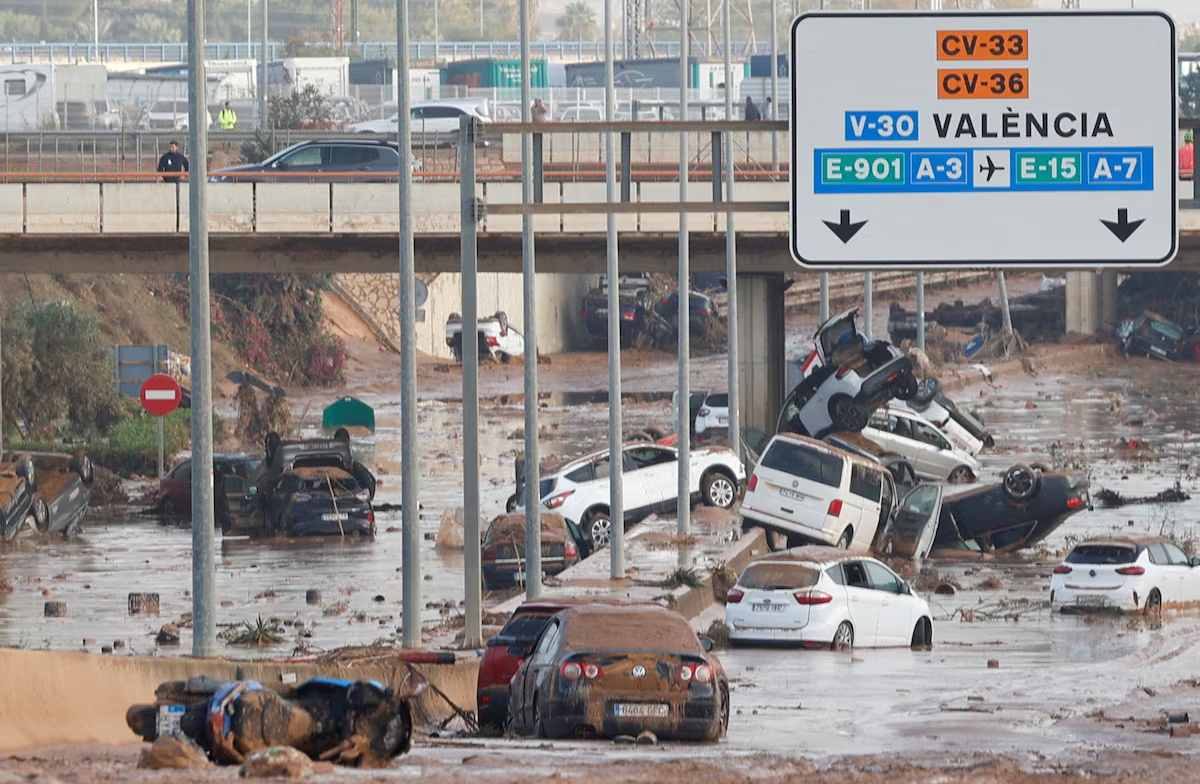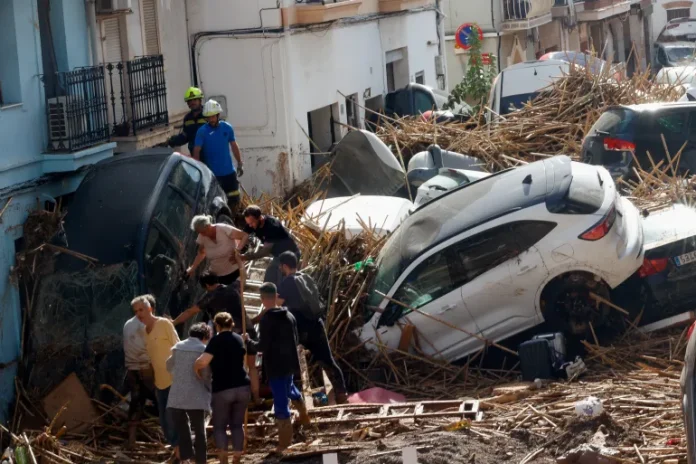Catastrophic Floods in Spain Claim 158 Lives as Nation Grapples with Historic Disaster
Eastern Spain is reeling from a devastating flood disaster, with the death toll reaching 158 and ongoing search efforts to locate dozens of missing individuals in what experts are calling one of Europe’s most catastrophic storm-related incidents in decades. The unprecedented flooding, which struck the Valencia region, has swept away roads, homes, and farmland, marking Spain’s worst flood disaster in modern history. Officials say that the tragedy underscores the intensifying impact of climate change on extreme weather events, which scientists warn are becoming increasingly frequent and devastating.
In a catastrophic turn of events, Valencia experienced a year’s worth of rainfall in just eight hours on Tuesday, inundating the region with torrents of water. As floodwaters surged through neighborhoods and towns, they left an unprecedented path of destruction. According to Angel Victor Torres, Spain’s Minister for Regional Cooperation, the flood toll continues to rise as rescue teams recover bodies and respond to emergencies. “We are dealing with 158 confirmed fatalities, and the search continues for dozens more missing,” Torres stated during a press conference. “This is a disaster on a historic scale.”
As rescue teams scoured the flooded areas, they made heartbreaking discoveries on Thursday, including the bodies of eight people trapped in a garage on the outskirts of Valencia city. Among them was a local policeman. In the same neighborhood, La Torre, the body of a 45-year-old woman was found in her home, according to Valencia’s mayor, Maria Jose Catala.

For those affected by the floods, the traumatic experiences are still fresh. Thousands of Valencia residents were seen carrying bags and pushing carts across a pedestrian bridge over the Turia River, moving into the city center in search of essential supplies like drinking water and food. The flood disaster has sparked strong criticism of the government’s response, with opposition leaders accusing officials of failing to provide adequate warning to residents. “Many of these lives could have been saved if people had been warned in time,” said Laura Villaescusa, a resident of La Torre and local supermarket manager, as she condemned the slow response.
The floods have left Valencia’s infrastructure in shambles, with bridges, roads, and railways submerged or severely damaged. Transportation Minister Oscar Puente noted that approximately 80 kilometers of roads are impassable due to flood damage or blocked by abandoned vehicles. “Tragically, some vehicles still contain bodies,” Puente said, adding that authorities estimate two to three weeks will be needed to restore high-speed rail links between Valencia and Madrid.
The agricultural heart of Spain’s citrus industry has also suffered a severe blow, as thousands of hectares of farmland lie underwater. The Valencia region, known for producing two-thirds of Spain’s citrus fruits, including globally exported oranges, has experienced substantial crop loss, which could have economic repercussions well beyond Spain’s borders.
The rural town of Utiel, situated about 85 kilometers inland from Valencia, was one of the hardest-hit areas. The Magro River burst its banks, sending waters as high as 3 meters (9.8 feet) into mostly single-story homes. According to Utiel’s mayor, Ricardo Gabaldon, the flood claimed the lives of six people in his town, most of them elderly or disabled residents unable to escape the rapidly rising waters.

Community members are now returning to their devastated homes, using water pumps mounted on tractors to clear out floodwater and salvage what remains. Children could be seen helping with clean-up efforts, while residents stacked ruined furniture and appliances in the streets. Streets remain slippery with mud, creating a further hazard, especially for elderly residents struggling to navigate the disaster zone.
The flooding in Spain aligns with predictions made by scientists about the increased frequency and intensity of extreme weather events as global temperatures rise. According to Climate Central, a research organization, the storm was fueled by an “atmospheric river” – a meteorological phenomenon in which a narrow band of concentrated moisture travels across the atmosphere, often from tropical regions. This atmospheric river drew in moisture from the abnormally warm waters of the tropical Atlantic, fueling heavy rainfall across Spain.
In its Climate Shift Index, Climate Central reported that human-induced climate change has significantly raised sea surface temperatures, increasing the likelihood of such extreme weather conditions by at least 50 to 300 times. This warming effect, combined with more intense and prolonged storm events, is expected to create conditions conducive to future floods of this scale, especially in vulnerable regions like the Mediterranean.
The catastrophe has sparked public outrage and calls for accountability from local officials. Maribel Albalat, mayor of Paiporta, a nearby town where 62 people died, said her community received no warning of the impending disaster. “It was a trap,” she stated, describing how many of the victims were elderly or individuals who were caught trying to protect their property. The Interior Ministry, responding to criticism, insisted that responsibility for civil protection rests with regional authorities, further stoking debate over Spain’s disaster response strategy.

Critics argue that the government could have better anticipated the flood’s severity and informed residents sooner, which might have saved lives. Many residents, especially those in flood-prone areas, say they have had to become increasingly vigilant about weather conditions and emergency alerts, with some now living in constant fear of extreme weather.
In response to the tragedy, Spanish Prime Minister Pedro Sanchez has urged citizens in flood-stricken areas to stay indoors amid predictions of further rain. He made an emotional appeal, emphasizing that “the priority is to protect as many lives as possible.”
Pope Francis extended his support, stating in a video message, “I am close to the people of Spain in this moment of catastrophe,” while expressing his condolences for those who have lost loved ones.
For those living in affected areas, the disaster has laid bare the vulnerabilities in Spain’s infrastructure and emergency response. Residents, particularly those who have experienced multiple floods, have voiced frustration at what they see as failures in planning and response. Antonio Molina, a resident of Godelleta who clung to a neighbor’s pillar to survive, says he feels authorities have failed to address the recurrent flooding issues. “We don’t want to live here anymore,” he said, fighting back tears. “Every time it rains, we check our phones in fear.”
Spain’s recent tragedy has shed light on the urgent need for infrastructure improvements and better flood management strategies. In flood-prone areas like Valencia, where the risk of extreme weather continues to grow, implementing robust disaster preparedness and response mechanisms is essential. Strengthening infrastructure to withstand heavy rains, updating evacuation protocols, and enhancing communication systems could help reduce the risk of future loss of life.

As rescue operations continue, the tragic flood in Valencia is a stark reminder of the escalating threats posed by climate change. With Spain mourning its dead and counting the costs of devastation, national and international leaders are once again faced with the challenge of addressing the vulnerabilities exposed by such catastrophic natural events. For the residents of Valencia and surrounding areas, rebuilding will be a long and arduous journey – but one that may pave the way for a more resilient future in the face of an ever-changing climate.




